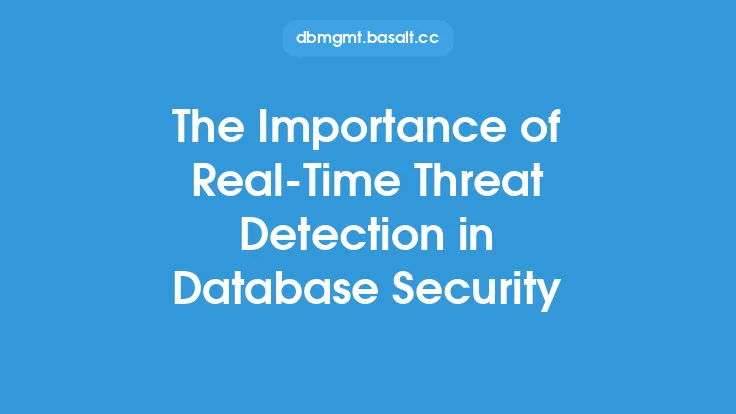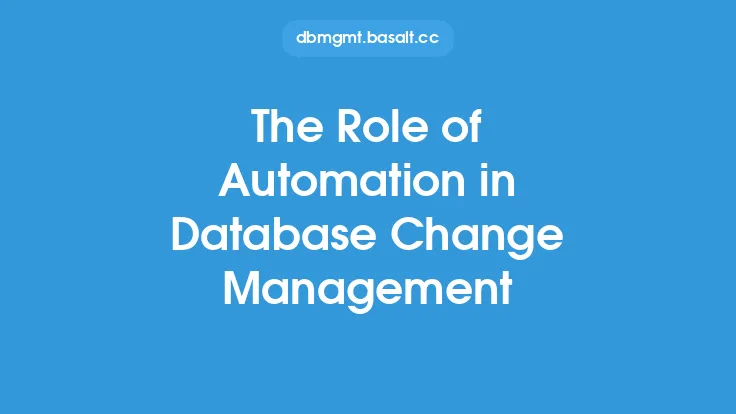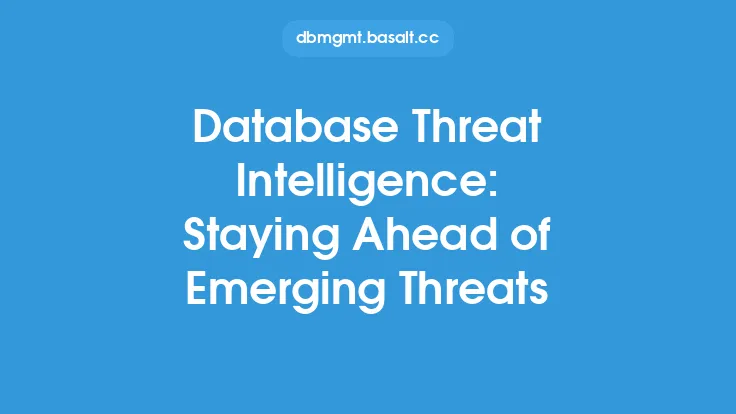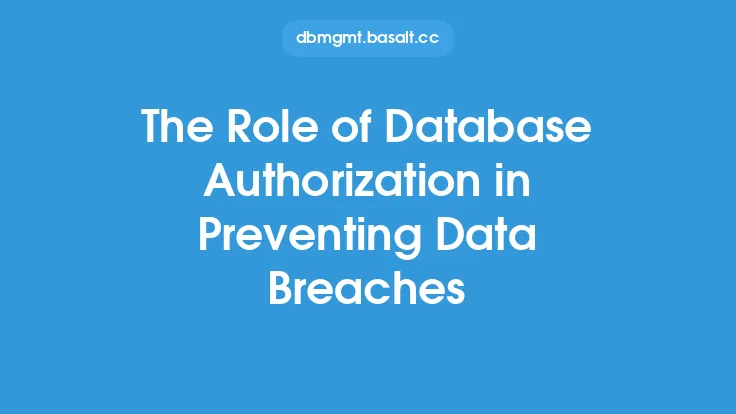The increasing complexity and sophistication of database threats have made it essential for organizations to adopt advanced security measures to protect their sensitive data. One such measure is the use of machine learning in database threat detection. Machine learning algorithms can analyze vast amounts of data, identify patterns, and detect anomalies, making them an effective tool in identifying and mitigating database threats.
Introduction to Machine Learning in Database Security
Machine learning is a subset of artificial intelligence that involves training algorithms on data to enable them to make predictions or decisions without being explicitly programmed. In the context of database security, machine learning can be used to analyze database activity, identify potential threats, and alert security teams to take action. Machine learning algorithms can be trained on various data sources, including database logs, network traffic, and system calls, to identify patterns and anomalies that may indicate a threat.
Types of Machine Learning Algorithms Used in Database Threat Detection
There are several types of machine learning algorithms that can be used in database threat detection, including supervised, unsupervised, and reinforcement learning. Supervised learning algorithms are trained on labeled data, where the algorithm is taught to recognize patterns and anomalies based on known threats. Unsupervised learning algorithms, on the other hand, are trained on unlabeled data, where the algorithm identifies patterns and anomalies without prior knowledge of threats. Reinforcement learning algorithms are trained through trial and error, where the algorithm learns to make decisions based on rewards or penalties.
Anomaly Detection in Database Threat Detection
Anomaly detection is a critical component of machine learning in database threat detection. Anomaly detection involves identifying patterns or behavior that deviate from the norm, which may indicate a potential threat. Machine learning algorithms can be trained to identify anomalies in database activity, such as unusual login attempts, suspicious queries, or unexpected data modifications. Anomaly detection can be performed using various techniques, including statistical analysis, clustering, and decision trees.
Deep Learning in Database Threat Detection
Deep learning is a subset of machine learning that involves the use of neural networks to analyze data. Deep learning algorithms can be used in database threat detection to analyze complex patterns and anomalies in database activity. Deep learning algorithms, such as convolutional neural networks (CNNs) and recurrent neural networks (RNNs), can be trained on large datasets to identify potential threats, including SQL injection attacks, cross-site scripting (XSS) attacks, and privilege escalation attacks.
Advantages of Machine Learning in Database Threat Detection
The use of machine learning in database threat detection offers several advantages, including improved accuracy, increased efficiency, and enhanced scalability. Machine learning algorithms can analyze vast amounts of data, identify patterns and anomalies, and detect potential threats in real-time, reducing the risk of false positives and false negatives. Additionally, machine learning algorithms can be trained to adapt to evolving threats, making them an effective tool in staying ahead of emerging threats.
Challenges and Limitations of Machine Learning in Database Threat Detection
While machine learning offers several advantages in database threat detection, there are also several challenges and limitations to consider. One of the primary challenges is the quality and availability of training data, which can impact the accuracy and effectiveness of machine learning algorithms. Additionally, machine learning algorithms can be computationally intensive, requiring significant resources and infrastructure to support. Furthermore, machine learning algorithms can be vulnerable to evasion techniques, such as adversarial attacks, which can compromise their effectiveness.
Best Practices for Implementing Machine Learning in Database Threat Detection
To effectively implement machine learning in database threat detection, several best practices should be considered. First, it is essential to collect and preprocess high-quality training data, which can impact the accuracy and effectiveness of machine learning algorithms. Second, it is crucial to select the appropriate machine learning algorithm, based on the specific use case and requirements. Third, it is essential to continuously monitor and update machine learning models, to ensure they remain effective and adapt to evolving threats. Finally, it is critical to integrate machine learning with other security tools and systems, to provide a comprehensive and layered security approach.
Future of Machine Learning in Database Threat Detection
The future of machine learning in database threat detection is promising, with ongoing research and development in areas such as explainable AI, transfer learning, and adversarial training. Explainable AI involves developing machine learning algorithms that can provide insights and explanations into their decision-making processes, which can improve trust and transparency in database threat detection. Transfer learning involves training machine learning algorithms on one dataset and applying them to another, which can improve the efficiency and effectiveness of machine learning in database threat detection. Adversarial training involves training machine learning algorithms to withstand evasion techniques, such as adversarial attacks, which can improve their robustness and resilience. As machine learning continues to evolve and improve, it is likely to play an increasingly important role in database threat detection, enabling organizations to stay ahead of emerging threats and protect their sensitive data.





